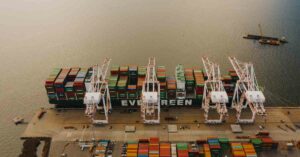
IMO Unveils Four-Year Agenda For Safer And Greener Shipping
February 5, 2024
US Plans To Launch Additional Strikes Against Iran-backed Forces In Middle East
February 5, 2024
Houthi attacks on shipping have caused interruptions in the Red Sea, and U.S. container ports, especially those on the West Coast, are prepared for a possible spike in cargo volumes. Shippers are rerouting their goods, leading to discussions about supply chain issues between stakeholders and the U.S. Department of Transportation.
During a recent call, the Maritime Administration discussed the persistent danger to commercial ships in the western Gulf of Aden and southern Red Sea. Important information is anticipated to be included in a soon-to-be-updated Maritime Advisory. Industry participants expected that cargo rerouting would cause significant delays at U.S. container ports in the next four to six weeks, and many highlighted concerns about specific issues.
The Ports of Los Angeles and Long Beach expect a possible influx of carriers, and stakeholders are being ready based on insights gained during the COVID-19 pandemic. This information is essential for planning and handling traffic and other problems.

Although the impact on the volume of containers imported into the United States has been negligible thus far, shippers may decide to redirect cargoes to avoid longer voyages across the Cape of Good Hope. Uncertain vessel timetables and equipment shortages brought on by the displacement of empty containers are two common reasons supply chain interruptions frequently result in port congestion.
In contrast to the early phases of the COVID-19 epidemic, inland transportation networks and ports in the United States are running well. Compared to two years ago, when about 100 ships were waiting to access the Los Angeles and Long Beach ports, this represents a significant improvement in resolving port congestion.
Shipping and supply chains in the area are at further risk due to the worsening maritime security situation in the Red Sea, Gulf of Aden, Arabian Sea, Gulf of Oman, and Indian Ocean. U.S. ports, especially those on the West Coast, are proactively preparing for an increase in cargo quantities due to the disruption to cargo in the Red Sea.
Stakeholders are utilising the COVID-19 pandemic’s lessons to actively engage in conversations to address anticipated obstacles and disruptions. The inland transportation networks and ports in the United States are now stable. Still, the industry is nonetheless on guard, closely watching any changes and taking action to lessen the impact on supply chains.
Reference: Timesshippingnews, TIM News
US Ports Gear Up For A Possible Spike In Cargo Volumes Due To Red Sea Attacks appeared first on Marine Insight – The Maritime Industry Guide
Source: Maritime Shipping News


